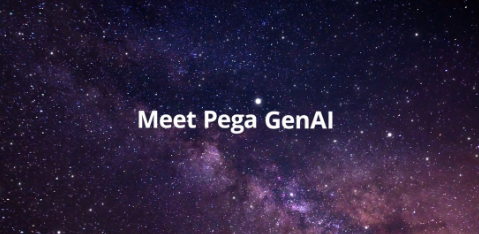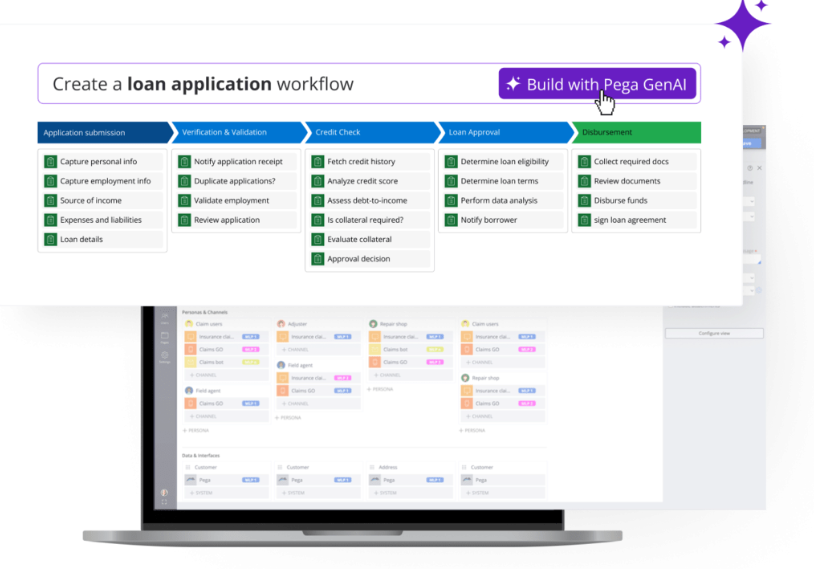 AI
AI
 AI
AI
 AI
AI
Low-code automation software platform Pegasystems Inc. is tapping generative artificial intelligence to fuel the capabilities of its latest tool, Pega GenAI Blueprint.
Announced today, the new offering merges Pega’s industry best practices with the power of generative AI to enhance application design processes.
The company argues that innovation in application development is being stifled and sabotaged because existing processes do not stimulate design thinking, nor do they attempt to align the needs of the various stakeholders involved in the process. Although generative AI can help to accelerate application design, existing models are much more focused on churning out software code than enhancing existing application workflows.
Pegasystems aims to change that with the launch of Pega GenAI Blueprint, which allows employees to transform their app ideas into powerful and interactive “blueprints” for an application that can easily be understood by all stakeholders.
The new tool leverages generative AI to create basic application blueprints from scratch. These blueprints can be easily understood and vetted by any stakeholder, the company said, before being deployed on the company’s automation platform to create an enterprise-grade application based on the design. As users attempt to outline their applications, Pega GenAI Blueprint provides helpful assistance at every step, improving access to application design for hundreds of unskilled workers.
The company explained that users can get started with Pega GenAI Blueprint by simply describing the intended purpose of their application. The user interface will then guide them through the process of laying out the app’s workflow elements, while facilitating collaboration with other stakeholders. The tool leverages the Pega GenAI engine to create the app’s blueprints, incorporating best practice workflow processes, data models and integrations. Once the app’s design has been finalized, the blueprint is then fed into Pega Platform, which automates the development process and transforms it into a working, enterprise-grade app that’s ready to use.
Pegasystems said the benefits of its tool include a more agile and optimized workflow design process, with generative AI models offering suggestions for the most optimal designs for each kind of application. What’s more, the apps created by Pega GenAI engine synthesize best practices in the financial services, healthcare, government and telecommunications industries, ensuring they are compliant and secure. According to the company, it offers customers a “nearly-there” design starting point, from which they can build their own customized apps.
Collaboration is also improved, with Pega GenAI Blueprint allowing users to invite colleagues to view and modify, add, delete or save different workflow stages in their application blueprints. In addition, users can be invited to process steps, data models and user personas and then share these as PDF files. By ensuring closer collaboration between stakeholders, Pegasystems says it’s able to deliver a significant reduction in errors and delays.

Finally, Pegasystems said, PegaGen AI Blueprint enables rapid deployment of newly built applications. The trick with this is that the tool automatically generates the underlying app structure, while guiding users through the all-important final steps, such as connecting the app to its data sources. To introduce new features, users can modify the corresponding blueprint for each app and then push out those capabilities as part of a continuous update process.
Pegasystems Chief Product Officer Kerim Akgonul said the deployment of new workflow applications involves far more than just generating code. Users must incorporate best practices and ensure the app is configured in a way that best meets the need of the enterprise, he said. “Done poorly, these initial steps could lead to missed deadlines, cost overruns and mismatched expectations later on,” he said.
Analyst Holger Mueller of Constellation Research Inc. said generative AI has the power to reduce the burden of application development by enabling users to use natural language and just describe what kind of apps they want. “However, there is greater value to be had from the background abstraction and automation of software requirements, and this is what Pegasystems is doing now,” Mueller said. “This innovation has the potential to transform the infamous long tail of automation needs and put business people back in charge of their automation destinies.”
Pega GenAI Blueprint gets around this, enabling citizen developers to finally compete with their fully trained peers. “Now, the once daunting app design process becomes less intimidating, which can fuel even greater ambitions to dream up additional groundbreaking apps that will propel organizations to new heights,” Akgonul said.
Support our mission to keep content open and free by engaging with theCUBE community. Join theCUBE’s Alumni Trust Network, where technology leaders connect, share intelligence and create opportunities.
Founded by tech visionaries John Furrier and Dave Vellante, SiliconANGLE Media has built a dynamic ecosystem of industry-leading digital media brands that reach 15+ million elite tech professionals. Our new proprietary theCUBE AI Video Cloud is breaking ground in audience interaction, leveraging theCUBEai.com neural network to help technology companies make data-driven decisions and stay at the forefront of industry conversations.